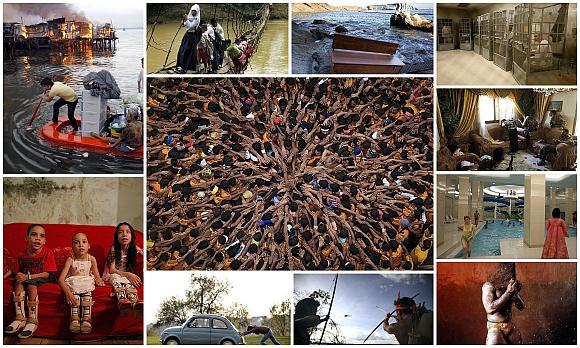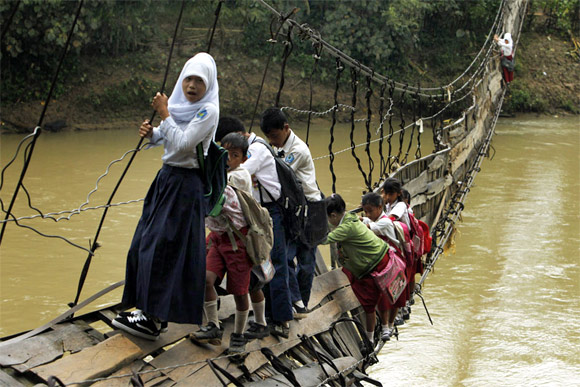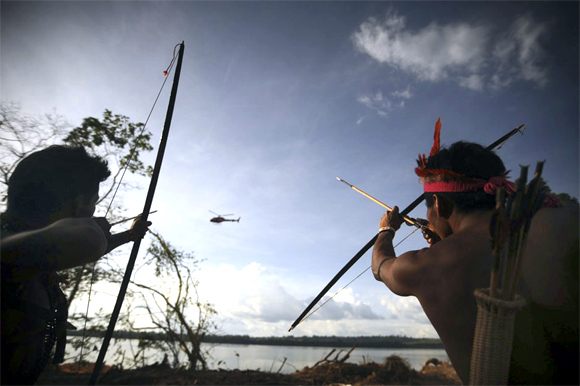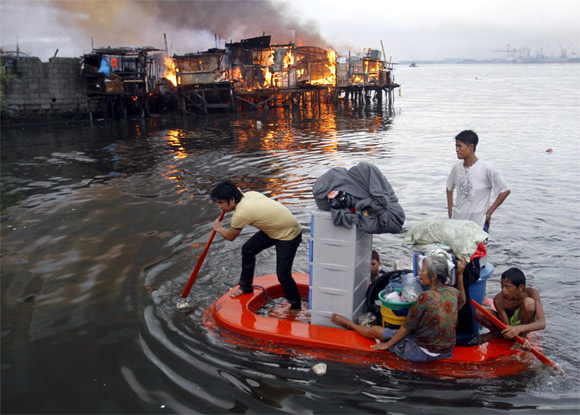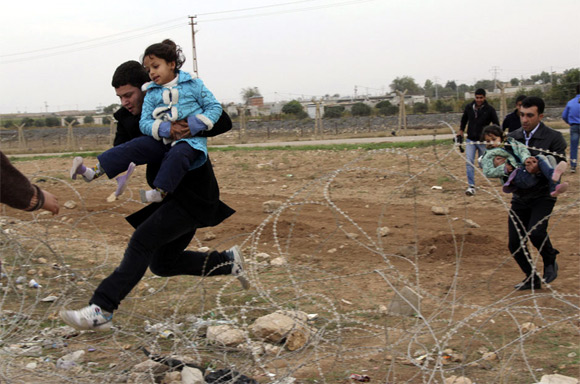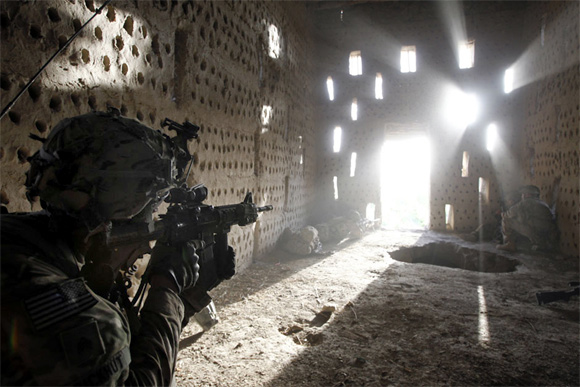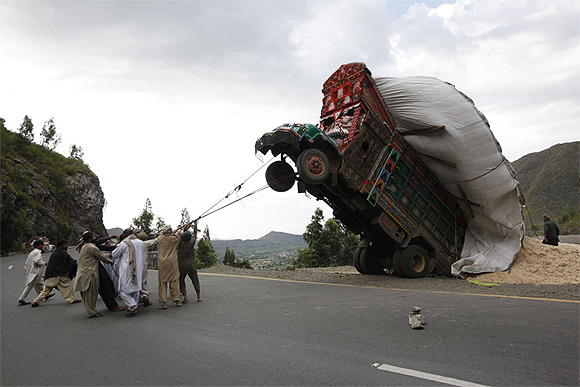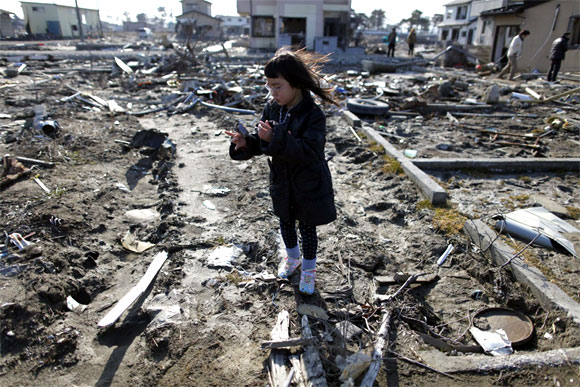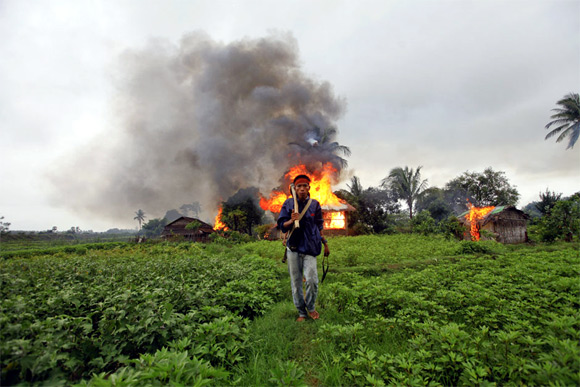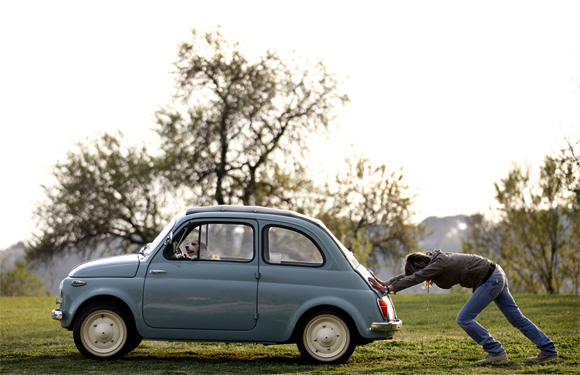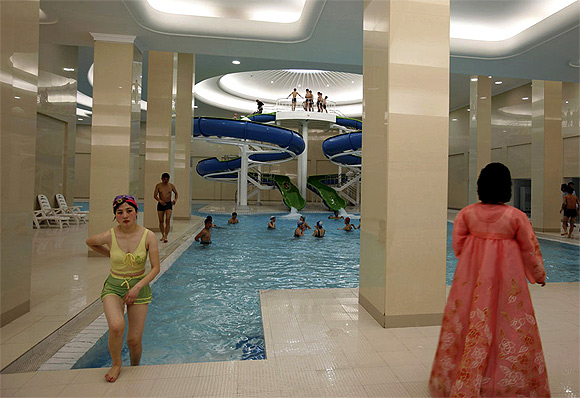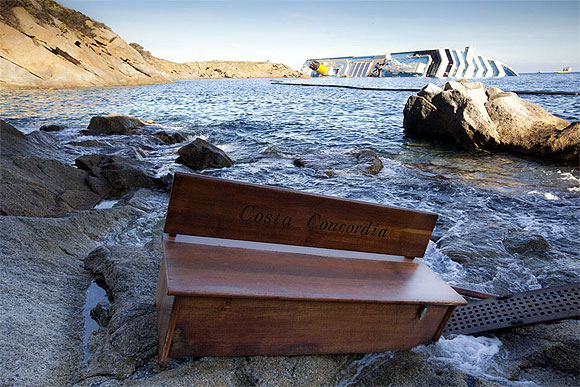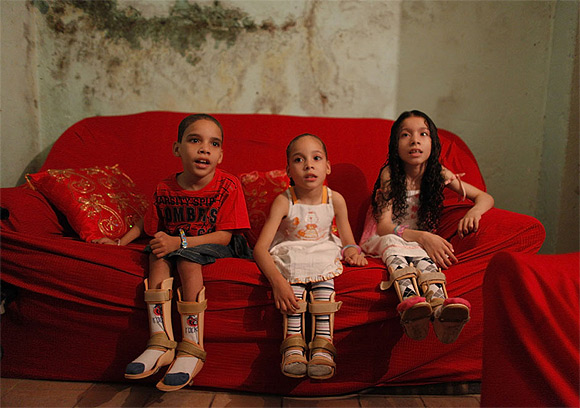 | « Back to article | Print this article |
In PHOTOS: The most INCREDIBLE moments of 2012
The year 2012 has witnessed several defining moments; the conflict in Syria, Hurricane Sandy that struck the United States, the re-election of Barack Obama as US President among others.
In a three-part series, we offer behind-the-scenes account of the images captured by Reuters photographers.
Click NEXT to go through our first part of INCREDIBLE moments of 2012
In PHOTOS: The most INCREDIBLE moments of 2012
"I received an image on my twitter feed. It was a photo from a local newspaper that showed a student crossing a river on a collapsed bridge. The picture caught me. I needed to find out where it was so I could go there to capture it.
When I had finished shooting some business pictures in Jakarta's financial district, I realized that I had something different to shoot for the next day. I searched Google Maps to find the location of the collapsed bridge but I couldn't find the exact location. There was a blank map with only the name of the village, Sanghiang Tanjung. Surprisingly, it said the village was just 130 kms away from our Jakarta office -- a travel time of about two hours. My estimation was it would take 4 hours.
At 3am the next morning, my friend and driver Soewarno and I headed to the village. We reached our destination by 6am. But the difficulty was this village was just a blank area on the map. Also, we had to find the right direction that the students would take so that I could take pictures from the front, not from the back. We found many roads in the village but no one knew where the bridge was. With the help of my friends, we were able to get the name of the head of the village, Epi Sopian, who accompanied us to the location. Edi said the bridge collapsed during Saturday's big flood when wood and bamboo hit the suspension bridge's pillar.
I arrived at the location as the students were crossing. They were already in the middle of the bridge. Oh no, these could not be the children who wanted to go to school, I thought! It was more like an acrobatic show, with the collapsed bridge as an apparatus and without any safety device at all. They walked slowly, sometimes screaming as their shoes slipped. Suddenly the rain came. A last group of students, Sofiah and her friend, were on the bridge. Happily, all the students crossed safely. I took pictures for no more than five minutes.
As Sofiah sheltered from the rain, I asked her: "Sofiah, is there no other way so you must pass through this collapsed bridge?" "There is, but we would have to walk around and that is 30 minutes more than this route. If we pass the collapsed bridge we need only 10 minutes to walk this way," she said. "You're not afraid?" I asked. "I was afraid," she replied very slowly. "But I have to go to school."
When the rain stopped, I followed Sofiah as she walked to school. It wasn't far, only a 10 minute walk. While following behind her, I thought, if Sofiah was my daughter (I have a daughter the same age as Sofiah) I would keep her at home until the government builds a new bridge. Perhaps her grades would not go up, but it's better than crashing and being dragged into the river. It was difficult to think that a day after taking pictures of middle class workers in the Indonesian capital, just three hours away from luxurious buildings, I found a group of students risking their lives to go to school.
Three months later, after this picture was widely published and shared, a new bridge has been built."
Click NEXT to see more PHOTOS...
In PHOTOS: The most INCREDIBLE moments of 2012
"The Belo Monte hydroelectric dam, planned to be the world's third largest, is one of more than 60 dams that the Brazilian government is planning to build in the Amazon basin. This dam in particular is one that has been controversial for the number of protests against its impact on the environment and indigenous communities.
In this context, the day I took this photo was one of the large protests by indigenous people, activists and fishermen affected by the mega-project, who were occupying one of the main construction sites. They dug a hole in a barrier that was blocking the Xingu River, planted some trees along the site and raised banners in protest. I'd been with them since early morning, but it was near the end of the day when I took this picture.
A police helicopter began flying over the protesters to intimidate them, and two natives of the Munduruku tribe, known as Amazon warriors, pointed their bows and arrows at the helicopter. I accompanied them as they followed the helicopter's movement, and I kneeled down to take the picture. They concentrated on taking aim, without shouts or insults, until the helicopter flew away. To me, that moment was a symbol of the ongoing struggle between indigenous peoples and the government."
Click NEXT to see more PHOTOS...
In PHOTOS: The most INCREDIBLE moments of 2012
"Of course I wanted to go to Syria. When a big story like this shows up, I believe my job is to go there and produce pictures. I gave up going to cover the Olympics. It was two days before my trip to London and I changed my ticket and went to Syria instead. I have been covering conflict for many years, since the Balkans in 1991.
Pictures must show the reality of the war in Syria and that's why I wanted to be as close as I could to the fighters - to the very front line to show exactly what they are doing, their emotions, how they run and fire weapons and also how they react to incoming shells. There is a certain amount of risk and you need to take all necessary precautions but if you want to tell the true story, you have to be there.
I like this picture where some fighters took position in a family living room. One rebel sat on the chair eating a chocolate bar as the commander looked out the window to scout the area beside a rebel firing from the window. They told me it was a former Syrian army position and they had killed three soldiers in the house (I could see tracks of blood in the corridor) and taken over their position. There was no one else in the house, except the rebels."
Click NEXT to see more PHOTOS...
In PHOTOS: The most INCREDIBLE moments of 2012
"I arranged to travel on a bus from Los Angeles with children who were visiting their fathers in San Quentin state prison. The prison has the largest death row in the United States, and the only gas chamber and death row for male inmates in California.
The children slept on the bus overnight as it made the nearly 400-mile journey, met with their fathers for a few hours, before returning to LA the same day.
I had arranged to meet reporter Mary Slosson from Sacramento at the prison. We chatted with the families and photographed them for a couple of hours. I wasn't allowed to photograph one family who was visiting a death row prisoner in a separate locked room, but Mary talked to the press officer and arranged for Reuters to have a prison tour.
We were shown around the exercise yards, some of the cells, and the medical building. A lot of the prisoners wanted to chat to us, and they swarmed around as we walked through the exercise yard.
In the medical building we crossed paths with a death row inmate and other shackled "administrative segregation" prisoners. One inmate was sitting in a cage in an empty room, watching television.
We passed a room of administrative segregation prisoners sitting in cages for a group therapy session. I took four frames before the prisoners started staring and a guard told us to move along.
My camera lens and settings were not ideal. In a perfect world, I would have changed to a wider lens to capture the reflection of the prison officer in the room on the right of the frame. I had been walking from rooms lit by daylight to fluorescent to mixed lighting, through dark corridors. So I was constantly changing the camera settings, while walking and looking out for photos."
Click NEXT to see more PHOTOS...
In PHOTOS: The most INCREDIBLE moments of 2012
"I found this traditional mud wrestling school while doing a story on the fight nights in Mumbai. As the weather was quite humid, the wrestlers put a lot of mud on their body to be able to grip."
Click NEXT to see more PHOTOS...
In PHOTOS: The most INCREDIBLE moments of 2012
"I took a high position on a building from where I could get a straight down shot of the devotees making a human pyramid to break a clay pot suspended between two buildings. This was the first group of devotees who, before breaking the pot, recited a short prayer by placing their hands on top of each other."
Click NEXT to see more PHOTOS...
In PHOTOS: The most INCREDIBLE moments of 2012
"It was Friday morning. The first order of the day was to photograph Chinese tourists in Manila to match a story on a travel ban imposed by China on the Philippines. But while on my way to Manila's Chinatown, I glimpsed at thick black smoke in the sky through my windows. As I checked my phone for alerts, the fire was on its second alarm and was located within Manila's densely populated port area called Isla Puting Bato or White Rock Island. Armed with the experience of covering fire, my intuition told me that this kind of fire would escalate. With that strong feeling in my mind, I called chief photographer Erik de Castro to let him know and got his nod to shoot the source of the thick black smoke.
Sirens echoed around as I found my way along streets full of container vans. A fire truck that sped past me was a blessing, as I instinctively followed it and it led me to where I was free from traffic. I parked and ran into the scene following the trail of fire hoses lying on the ground. I climbed a ladder and found myself shooting with firefighters on a roof, with them holding their hoses, and me, with my lenses. From there, I saw thousands of shanties made by informal settlers flanked on a high, barbed wire cemented wall and separated from the mainland through the Manila Bay.
As I was about to click my shutter, I heard a commotion near the water. Following the trail of noises, I went down and found stilt houses already being engulfed by the blaze as residents floated on whatever makeshift boats they had near the burning shanties. They were all jumping to escape the blaze. Through the viewfinder I saw families floating with their belongings and aimed to take a photo of that. They were taking turns paddling to safety. I waited for them to be close enough, held up my camera and took the shot as they paddled past with burning houses in the background."
Click NEXT to see more PHOTOS...
In PHOTOS: The most INCREDIBLE moments of 2012
"As the Free Syrian Army fights Syrian government forces for control of the northern town of Ras al-Ain, thousands of Syrians escape the violence for neighboring Turkey. Turkish authorities have set up a temporary collecting center for the fleeing Syrians before taking them to a refugee camp near the border town of Ceylanpinar.
While Turkey wants to prevent illegal entries and control the number of Syrians who are crossing the border, many Syrians prefer to run to the closer border fences rather than walk the kilometer or so to the collecting center. This way, they are able to reach the homes of relatives, rather than stay in a refugee camp. The people depicted here are not under gunfire but are instead trying to evade Turkish authorities who will register them and take them to a camp."
Click NEXT to see more PHOTOS...
In PHOTOS: The most INCREDIBLE moments of 2012
"I was embedded with Alpha Company, 5th Battalion, 20th Infantry Regiment attached to the 82nd airborne out of COP Siah Choy in Zharay district in Kandahar province, southern Afghanistan.
The unit was out on a mission for three days. Before heading back to their base a small group of soldiers including Sgt Nicholas Dickhut (the subject of this photo) walked to check a grape hut. Just after the first few soldiers passed through the door bullets started to hit the outside walls, one hitting just 10 inches above the head of one of the snipers.
The force returned fire. At that point Sgt Dickhut, who was one of the first men to enter, was kneeling while pointing his weapon and guarding the main doorway.
I took a few pictures trying to show the light coming through the windows and Sgt Dickhut's actions. At that moment I felt like there was a contrast between how calm the setting was and the shooting taking place.
I was back in our office in Kabul when I received the message that Sgt Dickhut was killed in action on April 30. I had only taken his picture a few days before."
Click NEXT to see more PHOTOS...
In PHOTOS: The most INCREDIBLE moments of 2012
"Every year, the same story repeats itself. July is the month dedicated to suffering in the Srebrenica region. It is dedicated to hell on Earth and trying to imagine what the people of Srebrenica went through during those days of the unfortunate war.
Mass graves, identifying laboratories, morgues and the bodies of the identified victims are only a small fraction of what can be seen through the lens of my camera. A lot more remains written there, in the clouds and in the mists of my thoughts and my head, behind the darkest corner of my eye - the corner that sees much more than the camera can see, capture and show. It is much more than what can be illustrated in a photograph, much more than anyone can see on the screen or read in the paper. There is a visible veil of sadness and sorrow, despair and grief. These words are so small and insignificant in contrast to what those who survived really feel and know. It is not comparable with all those things that they had seen with their eyes; it is impossible to compare this with their memories and their own abyss.
Imagine how you would feel if after 20 years had gone by, twenty long years after the disappearance of your closest family members, you were to sit inside your home waiting for their return home. Every time you hear the doorbell you think that it might be them there, standing on the porch, waiting for you to open the door. They have returned, it could be them, perhaps... What an unfortunate story, isn't it? This is how those people feel. They are waiting. They were waiting. I do not know whether it is a greater tragedy to bury a member of your family, or wait for them to return...
The days go by; the number identified from year to year increases. 520 victims were buried this year. Three days prior to the funeral, the coffins were brought into the building near the Memorial Center. The families of the victims gather there, the rivers of tears start flowing, their sobbing can be heard all around. This lasts for two consecutive days; the families caress the coffins, kiss them, hug and pray for their loved ones.
Over the last few years, Srebrenica has turned into a photo safari. Every year we can see hundreds of photographers here from numerous schools of photography from all over the world. They come to Srebrenica to study photography. This represents a big problem for us professional photographers, especially over the last couple of years. While working we run into many verbal conflicts with members of the victims' families because of these "offensive" photo amateurs. As a photographer, I have a hard time witnessing the definite farewells. In those moments, I feel as if the mothers of the killed would rather get into the graves with them, just to avoid saying goodbye. I feel as if they would like to disappear forever, only to be closer to their sons in heaven; to be with them, together. I do not know... I try to evoke and illustrate the essence of these emotions as much as possible through my photographs only to show the consequences of wars that can never be fully described."
Click NEXT to see more PHOTOS...
In PHOTOS: The most INCREDIBLE moments of 2012
"The Reuters multimedia team in the Islamabad bureau set up interviews for a feature looking at a military-run de-radicalisation center in Pakistan's Swat Valley. Taliban militants once controlled the area, imposing their brand of sharia law, including public beheadings. A military operation in 2009 drove them out, but policymakers felt long-term stability could only be achieved if they fought not just militants but their ideology as well. They set up the Mashal center to de-radicalize and reform captured militants.
We left Islamabad early in the morning for the Swat Valley, north of the capital. While the military operation in the area was over, there is still a significant military presence. We had to stop at the main entry checkpost and wait for clearance from the authorities. After we were cleared, we set off for Swat.
After driving for a short while through winding mountain roads, as we passed through the area of Dargai, I saw a truck that had tipped backwards. It was overloaded with wheat straw and the driver was trying to stop it from completely tipping over. I found the scene interesting and asked our driver to stop.
I got out of the car and shot a few frames. It became even more interesting when people passing by started to help the truck's crew, trying to pull it back with ropes. It was a really unusual scene. Some people went around and started unloading wheat straw to help reduce the weight."
Click NEXT to see more PHOTOS...
In PHOTOS: The most INCREDIBLE moments of 2012
"Hurricane Sandy hit the coast of New Jersey on a Monday. The next day I saw this roller coaster in the ocean at Seaside Heights from a helicopter. It was an odd scene, but only one small moment during the miles of damage I photographed from the air.
I met reporter Joey Ax Wednesday morning at a marina in Brick, NJ, with hopes to rent a boat and gain access out to the beaches. We were forced to change plans and drove to the Highway 37 Bridge in Toms River. Police road blocks at the bridge denied all access to the barrier islands, except for law enforcement and emergency vehicles. A small media contingent was gathering at the roadblock. Soon the Seaside Heights police chief agreed to bring us over for a 30-minute excursion.
Reporters and photographers crammed into a mini-bus and we were driven to two locations on the beach. We had limited access and were not allowed to wander off into the neighborhood. I photographed piles of debris and destruction, as well as police officers still looking in disbelief at their storm-damaged town.
It was cold and quiet - a gray day with brief moments of sunshine, gentle waves and an offshore breeze. Most of the noise came from the media as we scurried about trying to document as much as possible in the short time we had.
I moved down the boardwalk to isolate the roller coaster from the damaged pier, shooting tight frames of it standing in the ocean, but I also composed the frame to include the beach in the foreground. I timed a few shots for a set of breaking waves. There were a couple of seagulls, the glisten of newly uncovered seashells and the roller coaster standing upright in the surf. An unusual scene, on what might have appeared to be a typical autumn day on the beach.
It's a very surreal image to me, and not one I'll soon forget."
Click NEXT to see more PHOTOS...
In PHOTOS: The most INCREDIBLE moments of 2012
"A year after the tsunami devastated Higashi Matsushima city in Miyagi, seven-year-old Wakana Kumagai went to visit the spot near the sea where their house used to be. The pile of rubble had been cleared completely, and a mere foundation of what used to be a house remained, as slight proof that someone did once live there.
That day a year ago, Wakana's mother Yoshiko received a call from her husband. "The tsunami is coming. Take the kids and evacuate to the elementary school. I'll follow you guys shortly."
They waited for him to arrive in the snow, but he never did. Four days later, he was found dead near the school his family was at. He was 31.
Higashi Matsushima city has decided that this area should no longer be a residential neighborhood due to safety concerns. "I want to go back," Wakana shouted in tears after Yoshiko told her a week earlier that they would not be able to live near the sea anymore.
"When will we go back?" Wakana still wants to go back to that place; the place where adults fear to return because it reminds them of the tsunami, her mother said.
"It was the place where she grew up in. It was the place where she spent time with her dad who she loved so much. If the house is rebuilt there, maybe her dad will come back. If she goes back by the sea, maybe everything will be the same as before -- I think she feels that way," said Yoshiko, Wakana's mother."
Click NEXT to see more PHOTOS...
In PHOTOS: The most INCREDIBLE moments of 2012
"This photo was taken during the fighting between the ethnic Rakhine and the Rohingya Muslims."
Click NEXT to see more PHOTOS...
In PHOTOS: The most INCREDIBLE moments of 2012
"This wasn't what I expected at all when I arrived at the beach of Qingdao city in China's eastern Shandong province.
I was assigned to shoot portraits for a Reuters story on a Chinese airline company. We settled down to plan to board an aircraft with the company CEO, photographing him and other passengers on the plane. So, I booked myself a 24-hour round trip from Shanghai to Qingdao bearing in mind that during the half day in Qingdao I could shoot the green algae along the beaches which appears almost every summer.
However, my plan turned out to be a failure. The weather wasn't hot enough so there was very little algae. I was about to head back disappointed until I glanced at these women swimming in the ocean. They were wearing full-size masks on their head which looked a lot like wrestler's masks to me. I could imagine these women coming onto the beach very soon and starting to fight.
I laughed for a while and took some pictures. I discovered that this phenomenon didn't look strange to the locals at all. Consulting with some other swimmers, they told me that these nylon-fabric masks were invented by a woman about seven years ago and were believed to be good at blocking the sun's rays. It's easy to buy one at local swimwear stores as they are now mass produced.
That was how I came across an interesting method for beach-goers to prevent their skin from getting sunburned. I believe that there could be a wider market for these masks because most of the swimmers, especially women, would love to spend as much time as possible on the beach without getting a serious tan. To me, it's much easier and cooler to put on a mask than to put on lots of sunblock cream."
Click NEXT to see more PHOTOS...
In PHOTOS: The most INCREDIBLE moments of 2012
"For a long time I had been thinking of a way to illustrate the rising cost of gasoline in Italy. But I was looking for something different than the usual shot of the filling station with its list of prices above the pump.
After a long period of no luck and many miles travelled on my scooter, I came across this scene in the Roman countryside. My first instinct was to help the woman push her classic Fiat 500 but after a few seconds I instead grabbed my camera and fired off a few shots. I then helped the woman push her car but it was almost as if I was walking on air because I felt inside of me that the ingredients of the picture were perfect."
Click NEXT to see more PHOTOS...
In PHOTOS: The most INCREDIBLE moments of 2012
"This was part of a 10-day press tour to North Korea on the 100th anniversary of the birth of the late leader Kim Il-sung. A tour to the facilities of this university was arranged for a small group of journalists. I saw young women leave the pool and was intrigued by their old-fashioned swimwear. I decided to wait for someone to come out of the water again. Luckily, I also got an attendant in the frame. She had taken us there and stood by herself at that moment."
Click NEXT to see more PHOTOS...
In PHOTOS: The most INCREDIBLE moments of 2012
"I arrived in Italy to cover the Costa Concordia story not even knowing for sure if I would go to Giglio Island and shoot or if I was needed to stay in Rome and help with the editing. After landing, I learned that I would be heading straight to the Tuscan coastal city Porto Santo Stefano to catch a ferry to Giglio Island to help out with the coverage of the bizarre shipwreck tragedy which claimed over 20 lives.
After spending several days and nights photographing the cruise liner and rescue efforts from different places and different times in the company of several other photographers and television cameramen, I decided to wait for the right moment so that I could trek out alone across a rugged section of rocky coastline where I had not yet ventured. To my surprise I saw a lone television cameraman in the distance filming what appeared to be items that had washed ashore. I waited until he finished filming to go any closer, not wanting to disturb his image or audio of the scene.
Not until I got closer, after traversing a very steep rocky section and down to the water level, did I see the COSTA CONCORDIA inscription on the bench which must have washed ashore during the night with the tide. I was carrying only minimal equipment due to the difficulty of the trek to the location, and the lighting was harsh mid-day sunlight so I decided to shoot in RAW and hope that it would help me be able to maintain detail in the highlights and the shadows which were several f-stops different from each other."
Click NEXT to see more PHOTOS...
In PHOTOS: The most INCREDIBLE moments of 2012
"The house of the Rose family in an alley of the Brasilandia favela didn't appear on my taxi's GPS, and we got lost in the dark maze. I had to wait for a more decent hour closer to 5am before phoning them for help. With their directions, I finally reached the top of a steep alley, and found myself practically inside a "boca de fumo," best described as an open air crack den. It wasn't until the father, Ivo, quickly rushed to meet me and spoke to one of the addicts, that I heard the words, "Taxi free to pass." I was relieved.
We hiked downhill through two steep alleys to reach their house. In the living room, their three mute children, Samille, 9, Dhones, 7, and Izabely, 6, were sitting in a row on a red felt-covered sofa, in front of a wall covered with green and brown mold. The scene struck me as both sad and beautiful."
Click NEXT to see more PHOTOS...
In PHOTOS: The most INCREDIBLE moments of 2012
"It was a quieter evening than in hectic Dhaka. The gentle breeze of spring surrounded the cold atmosphere of the small town of Tangail, a town in the north east of Bangladesh. A small walk through a calm neighborhood took me to a place which looked similar to any of the country's slums.
The bright tungsten lights of grocery shops and the high volume of Bangladeshi pop music from the tea stalls mesmerize the whole area. Between those stalls, the alleyways on the other side of wide drains are dark. Following my fixer I suddenly found myself inside one of those narrow lanes, where young girls with heavy makeup and colorful clothes were lined up. The girls of different ages, though mostly teenagers, try to draw the attention of men by laughing, chuckling and pulling their hands.
The neighborhood of around one hundred buildings with more than 800 small rooms is one of the 14 official brothels of Bangladesh but is in essence a prison for around 900 sex workers. The young sex workers of this brothel must serve at least 10-15 customers each day. Being a "Chukri' or bonded girl, they are bound to follow the orders of their Sardarni (House owners, who were once prostitutes, purchase girls to run their business).
"When I first took a customer, I didn't realize what was going to happen. He raped me again and again. It was bleeding severely and I was crying. I didn't have any idea what sex is," said Hashi, who has been working as a prostitute since she was 10.
"I used to serve customers one after another during the whole day. I don't know how many, but I guess I had to serve around 20-25 customers in a day. I found at least four to five customers waiting in front of my room after waking up in the morning," said Hashi inside the brothel.
Click NEXT to see more PHOTOS...
In PHOTOS: The most INCREDIBLE moments of 2012
"Magnitogorsk, a city in the Chelyabinsk Oblast of Russia, is one of the largest metallurgical industrial centers in the world. It was built in the 1930's to use the high concentration of iron ore found in the "Magnetic Mountain" nearby. Other than the metal industry, the city is famous for being located half in Asia and half in Europe.
I happened to be there during the annual "Day of the Metal Worker" holiday which is celebrated with much enthusiasm by the local population on the third Sunday of July. The MMK (Magnitogorsk Iron and Steel Works) plant is the main local employer, in fact the city would not exist without it. I went to one of the highest points in the city to find a general view of the plant, and here I found locals enjoying the sunset and their yearly holiday looking over the smoking chimneys."
Click NEXT to see more PHOTOS...
In PHOTOS: The most INCREDIBLE moments of 2012
"When on the campaign trail, I'm looking for moments away from the candidates - there are only so many images you can make of someone holding a microphone. So, you look for reactions, or some of the more subtle nuances; a button, a sign. U.S. presidential candidates engage the public in retail politics, and this is sometimes what you get.
I saw this family and set up next to them. Rick Santorum began working the room, shaking hands and signing autographs. This family had come to the restaurant to have lunch and did not know that a presidential candidate would be there. The scrum moved through the room, and I broke off to photograph this family, and this woman, who said afterwards that she just wanted to enjoy her clam chowder."
Top PHOTO features of the week
Click on MORE to see another set of PHOTO features...
